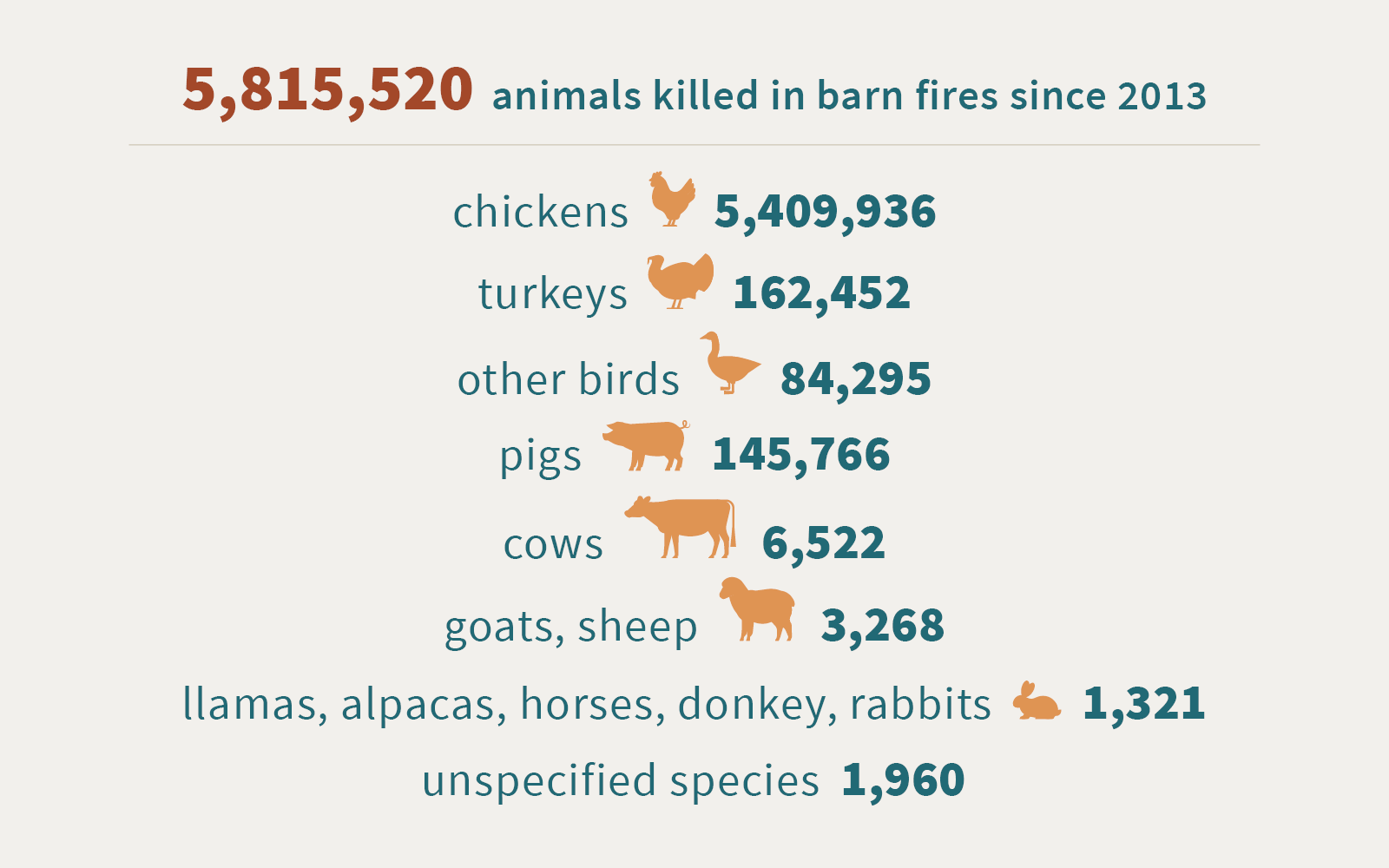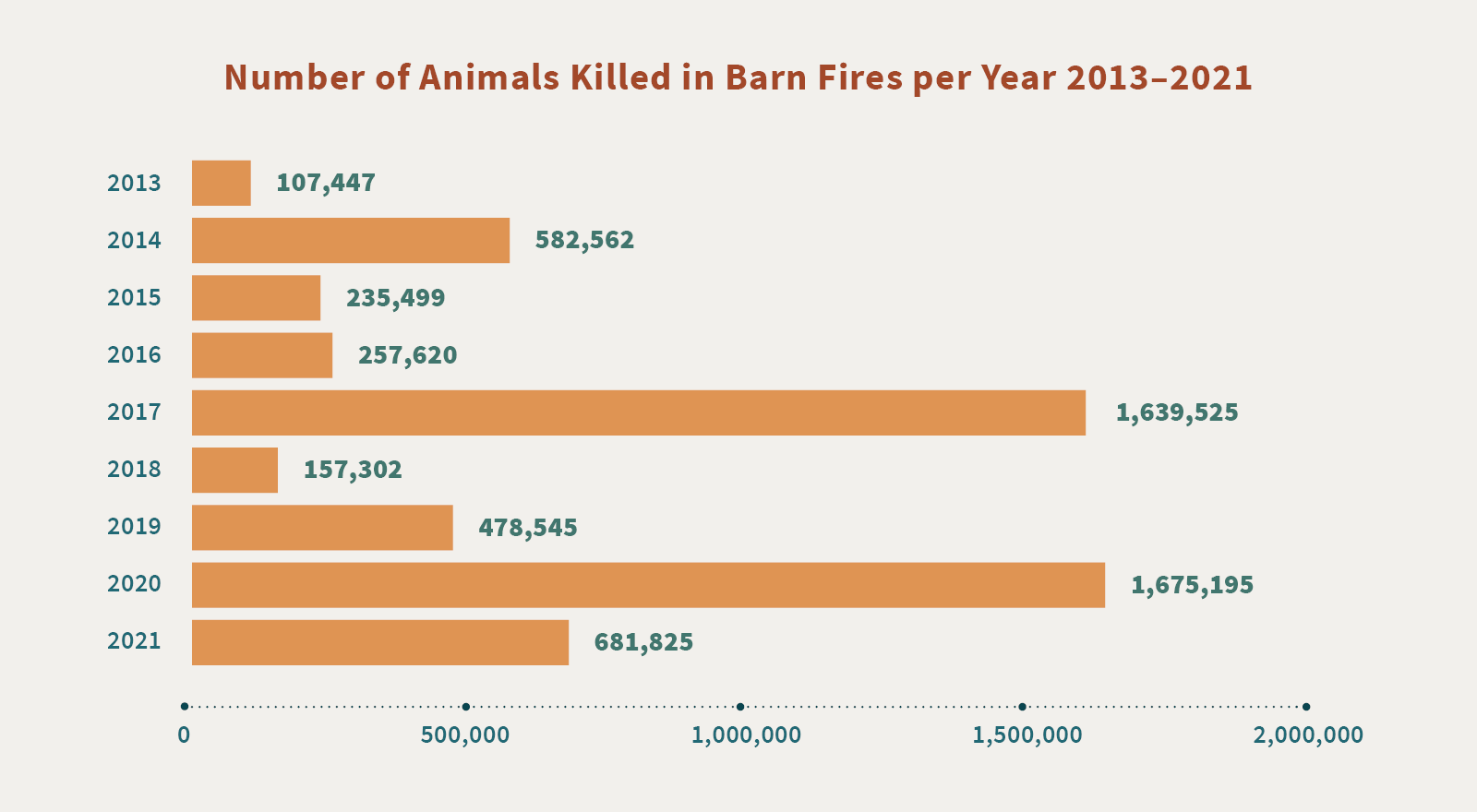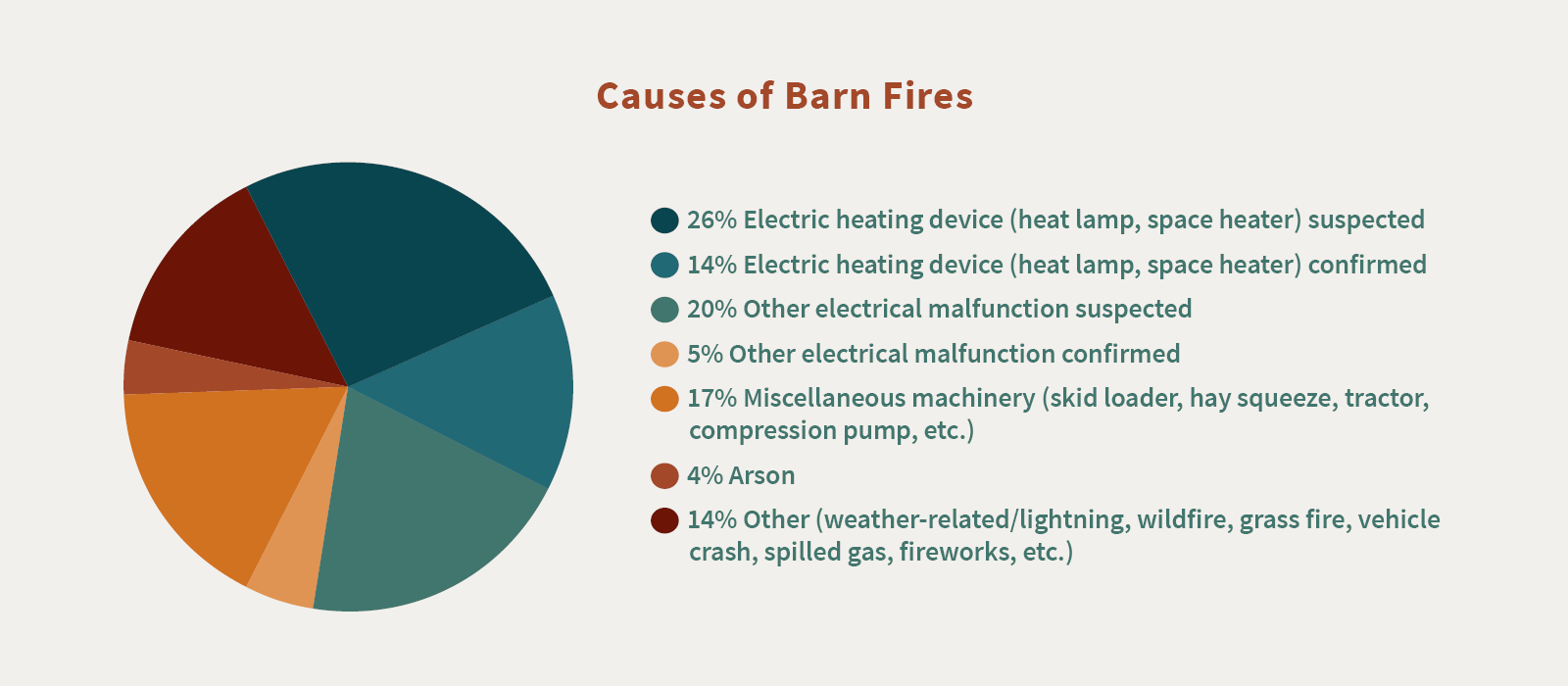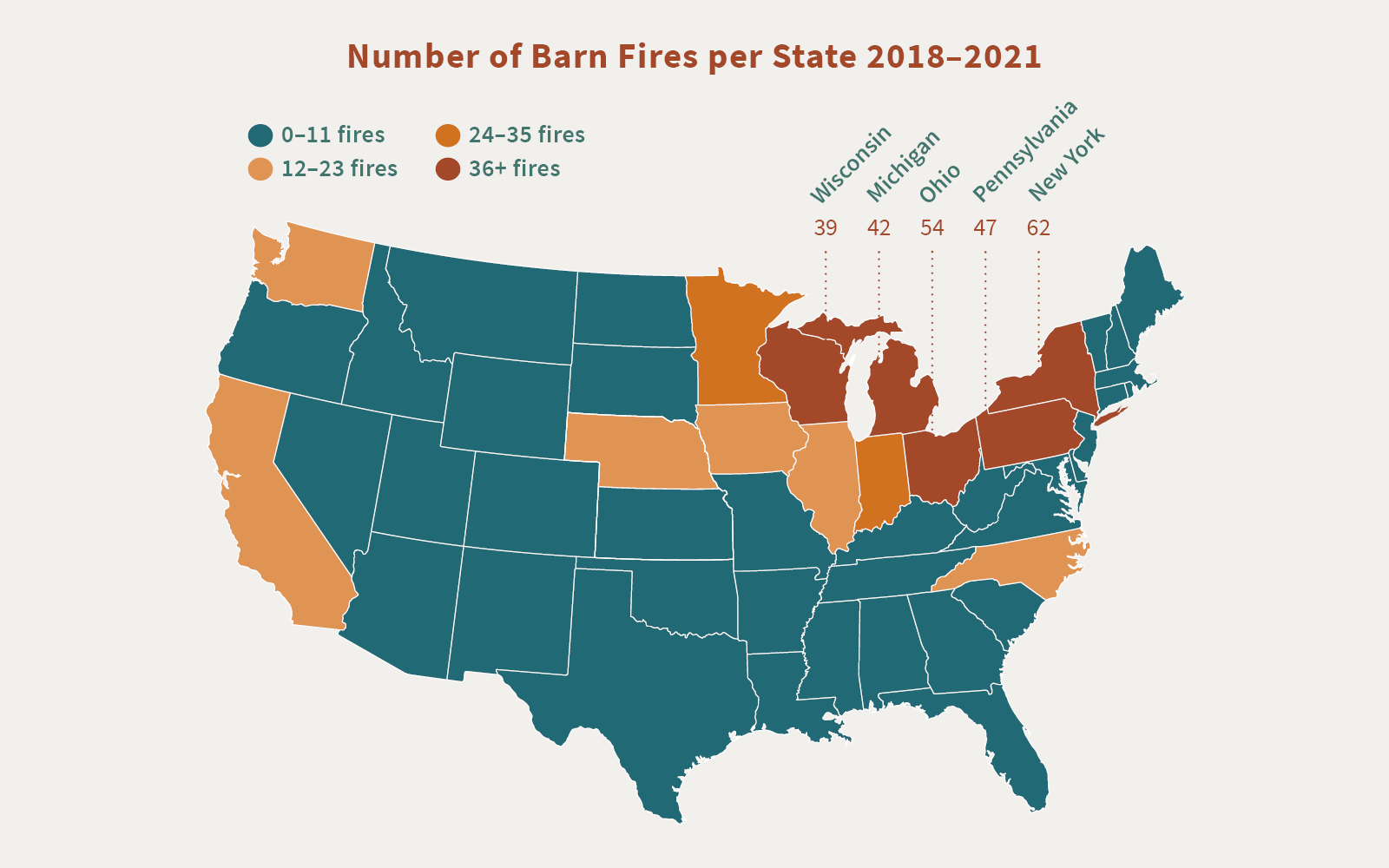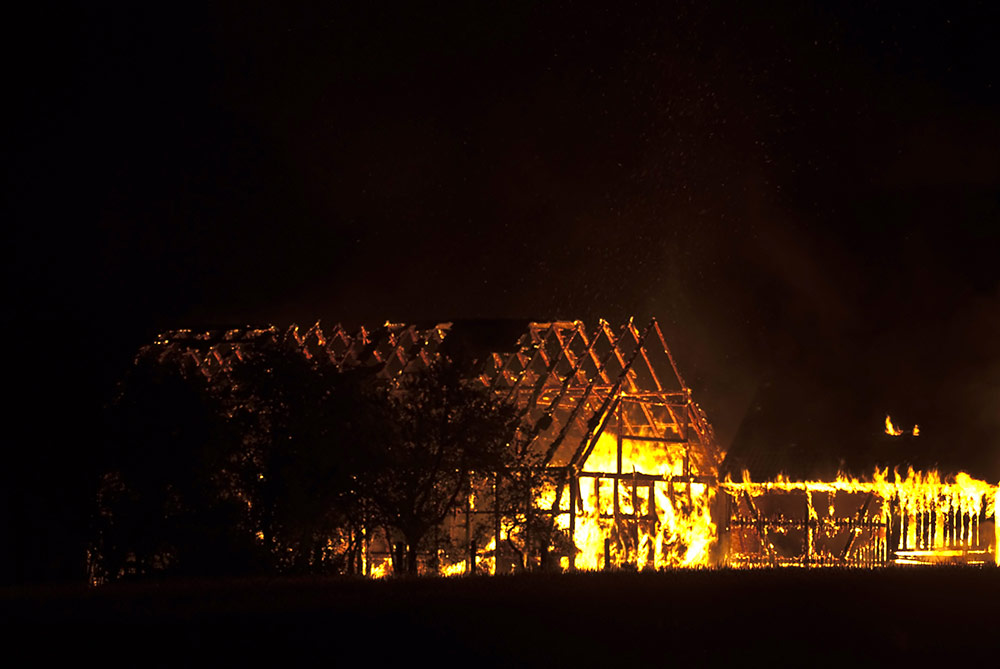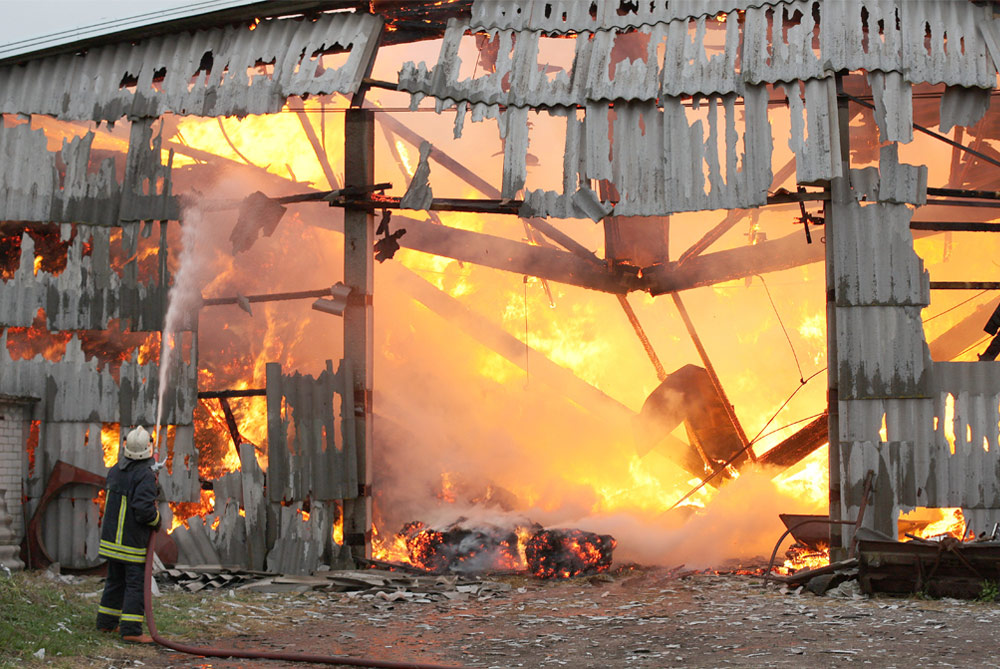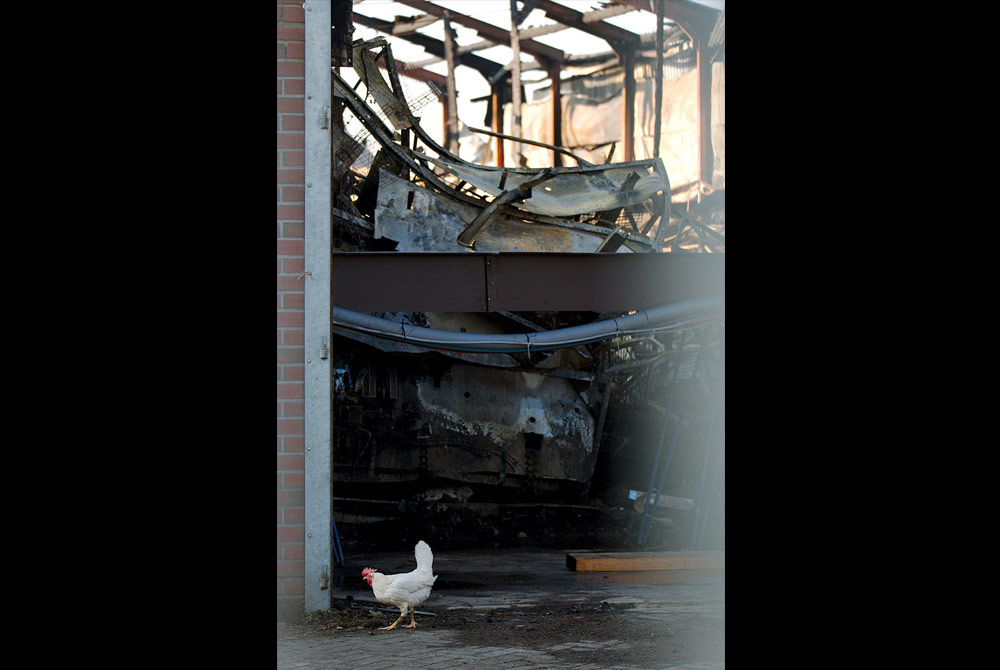The Risk Factors
Findings from our analysis of media reports during the years 2018 through 2021 suggest that the biggest risk factors for barn fires are malfunctioning heating devices and other kinds of electrical issues. Out of the 539 total barn fires that caused farm animal fatalities during this three-year period, the cause or likely cause of the incident was reported in 179 cases. In 65 percent of those 179 cases, the confirmed or suspected cause was a malfunctioning heating device and other electrical issue. This significant percentage suggests that heating equipment and electrical systems should be frequently checked and—if needed—repaired or replaced.
Most fatal barn fires occurred in colder states, particularly those in the Upper Midwest and the Northeast. New York, Ohio, Pennsylvania, Michigan, and Wisconsin had the highest number of barn fires, respectively. The amount of cold weather a state experienced appeared to be a greater factor in the prevalence of barn fires than the intensity of a state’s animal agriculture production.
While weather seemed to play a primary role in the prevalence of barn fires, this was not the case in terms of the total number of deaths reported by state. What distinguished the states with the highest total fatalities is that, in each, one or two catastrophic fires took the lives of hundreds of thousands of animals at once and accounted for nearly the entire death toll. Even in the one cold-weather state—a state that ranked high in both number of barn fires and total fatalities—two of the state’s 42 fires accounted for 96 percent of the total deaths.
